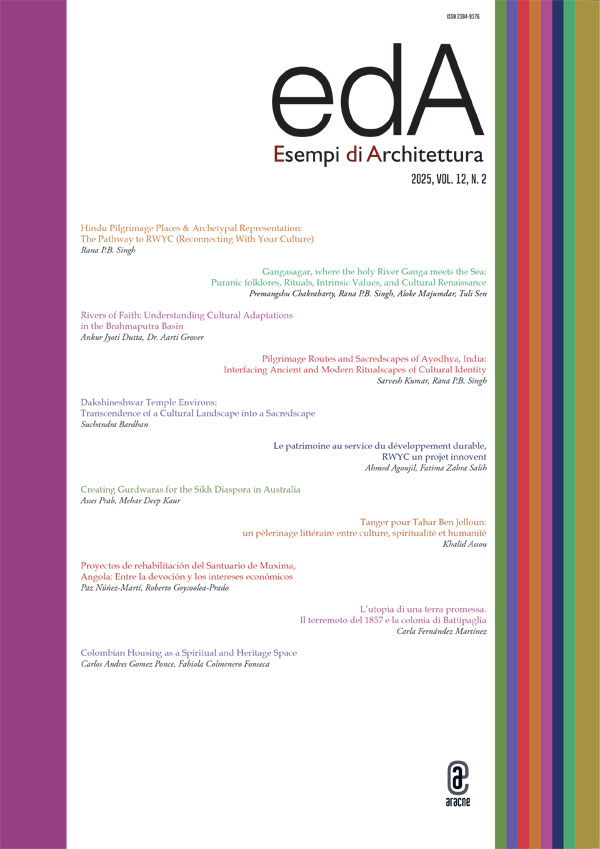Estratto dal volume Esempi di Architettura
Dakshineshwar Temple Environs: Transcendence of a Cultural Landscape Into a Sacredscape
DOI: 10.53136/97912218172185
Pagine: 245-260
Data di pubblicazione: Febbraio 2025
Editore: Aracne
SSD:
ICAR/14 ICAR/18 ICAR/20 ICAR/21
Dakshineswar temple environs in West Bengal, India, is a mid-19th century temple estate established by the celebrated Rani Rasmoni on the eastern bank of River Bhagirathi (a distributary of the Ganga River), a few miles north of Kolkata- the erstwhile Calcutta, the then centre of the British East India Company. It achieved a unique numinous quality whereby the religious complex was elevated from yet another temple estate to a sacred landscape, and it is currently a pilgrimage site for people of all classes, sects, and geographies. Its transformation from a private bungalow garden of a European officer in an otherwise riverine rural setting to ‘Rasmoni’s Thakurbari’ is said to be divinely ordained. The land was selected for establishing the Kali Temple owing to specific attributes conducive to Shakti Puja (‘goddess worship’), as was the practice of the time. This place was to be later sanctified by the great saint Sri Ramakrishna Paramhamsa Dev, whose spiritual ecstasies centring on natural elements transcended this cultural landscape into a Sacredscape. The kernel of the worldwide Ramakrishna movement and the expansive Ramakrishna Order were planted right here. This paper attempts to undertake a virtual visit to this holyscape during the life and times of Sri Ramakrishna through texts and visuals. Beginning with its genesis, the discourse navigates through the different on-site and offsite entities—both natural and built, their symbolism and sacred associations; it discusses how, unlike other similar contemporary religious estates, Dakshineswar attained such a high sacral dimension and became an epitomic icon of the spiritual culture.


